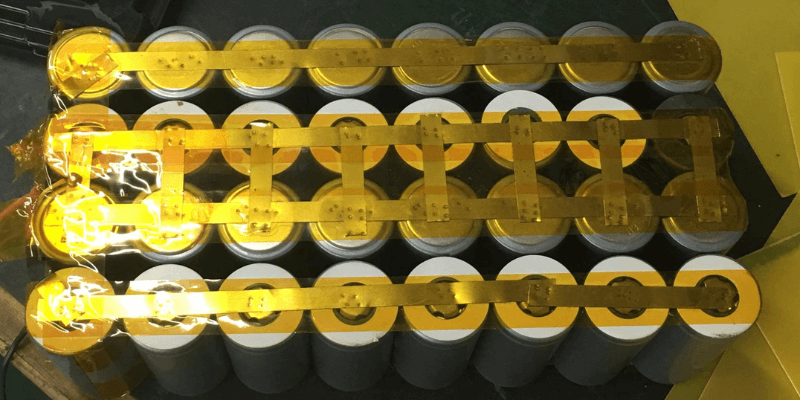Recomandări cheie:
- Rata C măsoară viteza bateriei — 1C oferă putere maximă într-o oră.
- Ratele mai mari de C pot duce la pierderi de energie sub formă de căldură.
- Calculați rata C folosind t = 1 / Cr; reglați pentru timpul de încărcare/descărcare.
- Ratele C ridicate sunt vitale pentru aplicațiile consumatoare de energie, cum ar fi dronele și pornitoarele de sarcină.
baterii au ceva numit a “Rata C.” Ne spune cât de repede se pot încărca sau da putere. Să-l descompunem.
Ce este o rată C?
Gândiți-vă la rata C ca la viteza cu care funcționează o baterie. O rată de 1C înseamnă că bateria își poate oferi toată puterea într-o oră. O rată de 0,5C? Este mai lent, oferind jumătate din putere în două ore.
Tabelul ratei bateriei C
Tabelul de mai jos arată rate diferite ale bateriei C împreună cu duratele de service ale acestora. Este esențial să rețineți că descărcarea unei baterii la diferite rate C poate duce la unele pierderi interne de energie. La rate mai mari de C, o parte de energie poate fi pierdută sub formă de căldură, reducând capacitatea cu 5% sau mai mult.
| Evaluare C | Timp |
| 0.05C sau C/20 | 20 de ore |
| 0.1C sau C/10 | 10 ore |
| 0.2C sau C/5 | 5 ore |
| 0.5C sau C/2 | 2 ore |
| 1C | 1 oră |
| 2C | 30 de minute |
| 5C | 12 minute |
| 10C | 6 minute |
| 20C | 3 minute |
| 30C | 2 minute |
Pentru a obține o citire exactă a capacității, producatori Evaluează adesea bateriile alcaline și plumb-acid la o temperatură foarte scăzută de 0,05 C sau o descărcare de 20 de ore.
Chiar și la această rată de descărcare lentă, bateriile plumb-acid ating rareori o capacitate de 100%, deoarece sunt adesea supraevaluate. Producătorii oferă compensații de capacitate pentru a ajusta discrepanțele dacă sunt descărcate la rate de C mai mari decât cele specificate.
Cum se calculează ratingul C al unei baterii
Evaluarea C a unei baterii este determinată de timpul necesar pentru încărcare sau descărcare. Ajustarea ratei C va afecta timpul necesar pentru încărcare sau descărcare. Calculul este simplu:
- t = Timp
- Cr = Rata C
Formule:
- t = 1 / Cr (în ore)
- t = 60 minute / Cr (în minute)
0.5C Rata Exemplu
- Baterie de 2500 mAh
- 2500mAh / 1000 = 2.5Ah
- 0.5C x 2.5Ah = 1.25 Amperi disponibili
- 1 / 0,5C = 2 ore
- 60 / 0,5C = 120 minute
Exemplu de rata 2C
- Baterie de 2500 mAh
- 2500mAh / 1000 = 2.5Ah
- 2C x 2.5Ah = 5 Amperi disponibili
- 1/2C = 0,5 ore
- 60 / 2C = 30 minute
Exemplu de rata 30C
- Baterie de 2500 mAh
- 2500mAh / 1000 = 2.5Ah
- 30C x 2.5Ah = 75 Amperi disponibili
- 60 / 30C = 2 minute
Găsirea evaluării C a unei baterii
Bateriile mai mici au în mod obișnuit o evaluare de 1C, cunoscută și sub numele de rata de o oră. De exemplu, o baterie etichetată 3000mAh la rata de o oră are un rating 1C de 3000mAh.
De obicei, rata C se găsește pe eticheta bateriei și pe foaia de date. Diferit baterie chimiile pot avea rate de C variate.
Bateriile cu plumb au adesea rate scăzute de descărcare, cum ar fi 0,05C sau rate de 20 de ore, în timp ce bateriile cu litiu pot gestiona rate C mult mai mari.
Dacă ratingul C nu se găsește pe etichetă sau pe fișa de date, este recomandabil să contactați direct producătorul.
Aplicații care necesită rate C ridicate
Multe aplicații și dispozitive moderne necesită baterii cu viteză C ridicată, inclusiv modele RC, drone, robotică și pornitoare pentru vehicule. Astfel de aplicații necesită explozii puternice de energie în perioade scurte.
De exemplu, cele mai multe pornitoare cu sarcină pot avea nevoie de o rată de descărcare de până la 80C, iar în industria RC, bateriile de descărcare de mare viteză sunt folosite până la rate de 50C.
Unele baterii pretind rate de C și mai mari pentru descărcarea maximă a impulsului, atingând descărcarea completă în câteva secunde. Cu toate acestea, majoritatea aplicațiilor nu au nevoie de astfel de rate C extreme.
Concluzie
Cunoașterea ratei C vă ajută să alegeți bateria potrivită. Este ca și cum ai alege între o mașină de curse și o bicicletă – ambele sunt bune, dar pentru lucruri diferite. Dacă nu sunteți sigur ce baterie să alegeți, vă rugăm să contactați echipa de inginerie Holo Battery.
Articole înrudite:

